October itinerary in Japan Day 7 (Hyogo Day 1)
(Tuesday, October 26)
Table of contents
1. Shoshazan Engyoji Temple
In the morning, I went to Shoshazan Engyoji Temple by bus from the bus terminal of Himeji Station. The bus I got on is as follows.
Depart Himeji Station at 8:05, Shoshazan Ropeway Line, arrive at Shoshazan Ropeway at 8:37, Fare Yen 280
If you go to Ichijoji in the afternoon like me, the one-day ticket for Shinki Bus (Yen 1,300 for adults, Yen650 for children) is a great deal (Yen 580 discount).
There is also a set ticket for the Shoshazan Ropeway and bus (adults Yen1,420 , children Yen710). It will be a little profitable (Yen140 discount).
For one-day tickets and set tickets, please contact the Shinki Bus Himeji Station Information Center (business hours, weekdays 8: 00-20: 00, weekends and holidays 8: 00-18: 00).
You can also walk to Engyoji Temple from the Shoshazan Ropeway bus stop, but it takes about an hour on a steep mountain road. The ropeway will arrive in less than 5 minutes, so if your goal is not to climb, it would be wise to use the ropeway. The view from the ropeway is very beautiful.
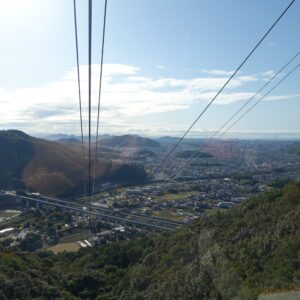
Round-trip fare: Yen1,000 for adults, Yen500 for children
It takes about 20 minutes on foot from Mt. Shosha Ropeway Sanjo Station to Mani-den via Niomon. There is also a minibus (Yen500 round trip) to Mani-den.
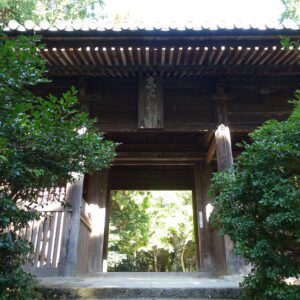
Shoshazan Engyoji Temple is a special head temple of the Tendai sect. It is said that Shoku was founded in 966 and Benkei Musashibo trained at this temple at the end of the Heian period.
Among the temple buildings of the temple, the photo of Mani-den is often used as a representative building of the temple. This time, because of the “Morning Glory Project the day after tomorrow,” Mani-den was covered with a string that allows the morning glory vines to be attached. It was very disappointing that the beautiful “the manner of a stage ” of Mani-den was covered with strings.
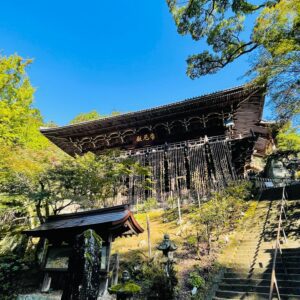

Walking further back from the Mani-den, the “Mitsu-no-do” (Dai-ko-do:large auditorium, Jiki-do:dining room, and Jogyo-do) built in the Nishitani Square is even more wonderful than the Mani-den. When we stand in Nishitani Square, we feel like we have traveled back in time to the Middle Ages. “Mitsu-no-do” is used as a location for many films such as the movie “The Last Samurai” and the NHK Taiga drama “Gunshi Kanbei”. The Dai-ko-do, Jiki-do and Jogyo-do are all national important cultural properties.


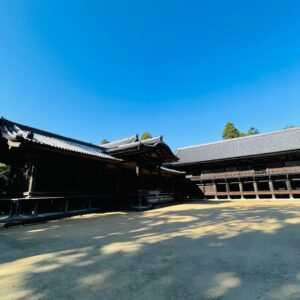
In addition to “Mitsu-no-do”, the bell tower, Kongo-do, Goho-do, Goho-do Hai-den hall, and Kaizan-do are national important cultural properties.
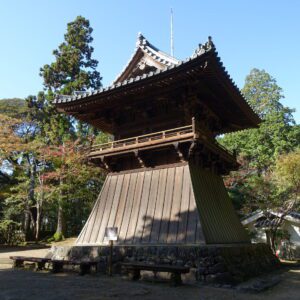
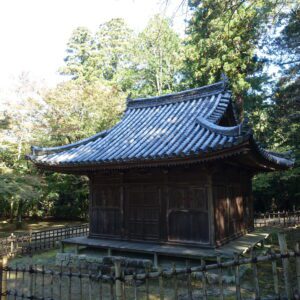
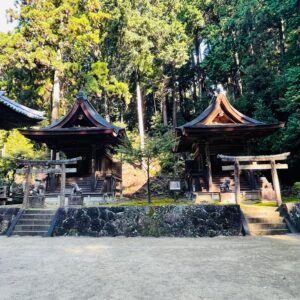

In addition, Engyoji Temple is one of the constituent cultural properties of the Japanese heritage “A 1,300-Year-Old Buddhist Pilgrimage” selected by the Agency for Cultural Affairs.
Personally, I like Engyoji Temple very much, so when you go to Himeji Castle, be sure to visit Engyoji Temple, which is also called Mt. Hiei in the west.
Entrance fee: Yen500
2. Himeji Castle
I went to Himeji Castle from Engyoji Temple. The bus I got on is as follows.
Depart Shoshazan Ropeway at 10:49, for Himeji Station North Exit, arrives at Himeji Castle Otemon-mae at 11:08, fare Yen280
I was able to get on the fuel cell bus, which was introduced for the first time in western Japan, in Himeji. I want fuel cell buses to become more and more popular.
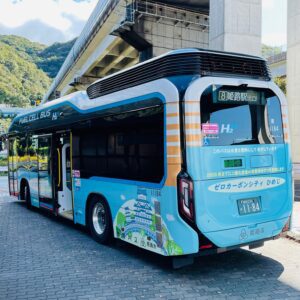
I’ve been to Engyoji Temple several times, so I stayed at Engyoji Temple for a little over an hour, but if you’re visiting for the first time, I think it’s better to stay for about two hours.
Himeji Castle, along with Horyuji Temple in Nara, became Japan’s first World Heritage Site. It is also a national treasure. Also known as Shirasagi Castle, it is highly regarded by many as the most beautiful castle in Japan, so most Japanese people may know it.
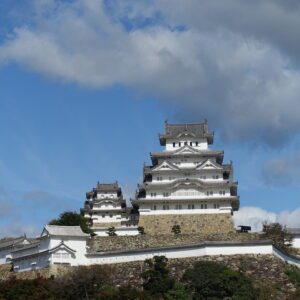
Himeji Castle is often photographed from the south side (Himeji Station side) (pictured above). However, I like Himeji Castle from the north side (Shirotopia memorial park side) (first photo below). From the north side, you cannot see the stone wall of the main castle tower. However, the small east castle tower and the roof watari-yagura (the roofed-passage turret) look very beautiful, and it seems that you can feel the atmosphere at the time of the castle construction. The south side seems too defenseless. The atmosphere of Himeji Castle also changes depending on the shooting location, such as from the side or from below, so please try shooting from various locations. Himeji Castle at night is also beautiful.
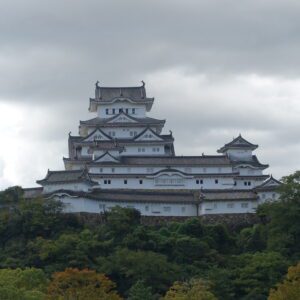
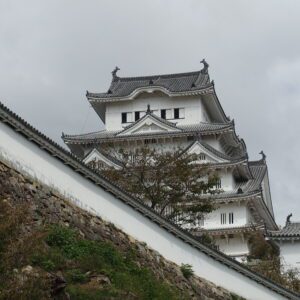
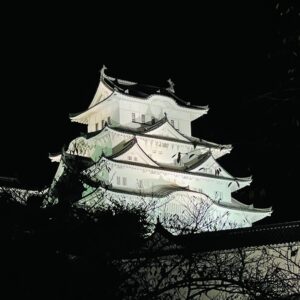
Admission: Adults Yen1,000 (18 years old and over), Children Yen300 (elementary school students, junior high school students, high school students)
3. Koko-en
Koko-en is a Japanese garden to the west of Himeji Castle. It was built to commemorate the 100th anniversary of Himeji City and opened in 1992. The feature is that Himeji Castle is a borrowed landscape. However, despite being quite close to Himeji Castle, you can hardly see the castle tower. Since Kokoen is a beautiful garden, there are good deals on common tickets, so if you have time before and after going to Himeji Castle, it is worth visiting. It is also used as a location for many movies and TV dramas such as the movie “Rurouni Kenshin”.
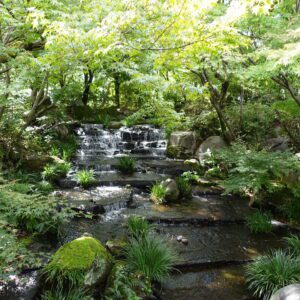


Admission: Adults Yen310 (18 years old and over), Children Yen150 (elementary school students, junior high school students, high school students)
Common ticket with Himeji Castle: Adults Yen1,050 (18 years old and over), Children Yen360 (elementary school students, junior high school students, high school students)
4. Ichijoji Temple
After visiting Kokoen, I had lunch and went to Ichijoji Temple. The bus I got on is as follows.
Depart Himeji Station at 13:00 Departs, for Yashirocho Station, arrives at Hokkezan Ichijoji at 13:37 Fare Yen660
Ichijoji is a temple of the Tendai sect, which was founded in Kasai City, Hyogo Prefecture, in 650 AD. The three-storied pagoda, built in 1171, is a national treasure. It is the 6th oldest three-storied pagoda in Japan. In addition, Nara’s three-storied pagoda monopolizes the 1st to 5th as oldest places. The three-storied pagoda of Myotsuji Temple in Fukui Prefecture, which I visited two days before my visit to Ichijoji Temple, is the eighth oldest pagoda in Japan and is a national treasure like Ichijoji Temple.


This time I visited Ichijoji Temple for the first time and everything was wonderful. The great thing about Ichijoji’s three-storied pagoda is that the Daihikaku (main hall) is built above the three-storied pagoda, so you can see the wonderful three-storied pagoda from below and above. The Daihikaku (main hall) and Jogyo-do, which are national important cultural properties, were also wonderful buildings.

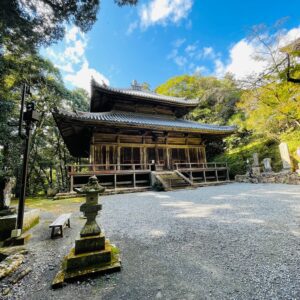
Ichijoji Temple is is one of the constituent cultural properties of the Japanese heritage “A 1,300-Year-Old Buddhist Pilgrimage” selected by the Agency for Cultural Affairs.
Admission fee: Yen 500
After returning to Tokyo, I learned that all 10 of the national treasures of Ichijoji, “Prince Shotoku and the High Priest of the Tendai ” can be seen at the special exhibition “Buddhist art of the Tendai School” at the Tokyo National Museum. So, I went to the Tokyo National Museum on November 7th to see it. All 10 “Prince Shotoku and Tendai High Priest Statues” were exhibited at the entrance of the special exhibition, which was one of the highlights of the special exhibition. It is a work of the Heian period, around the latter half of the 11th century. It’s quite old, but I was impressed by the vivid coloring. Includes the oldest surviving portrait of Saicho.It was good to see the national treasure of Ichijoji immediately after visiting Ichijoji.

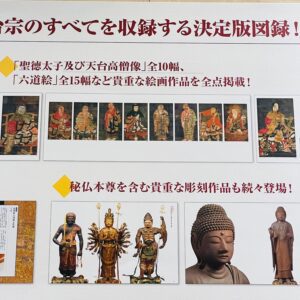
5. Kakurinji Temple
After visiting Ichijoji Temple, I went to Kakurinji Temple. The buses and trains I got on are as follows.
Depart Hokkezan Ichijoji at 15:07, for Himeji Station, arrive at Himeji Station at 15:48, fare Yen660
Depart Himeji Station at 15:56, JR Kobe Line Special Rapid Service bound for Nagahama, arrive at Kakogawa Station at 16:06, fare Yen330
I didn’t have much time, so I took a taxi from Kakogawa station. I arrived at Kakurinji Temple in about 10 minutes. It takes less than 30 minutes to walk from Kakogawa station. The deadline for admission to Kakurin-ji was 16:30, so I entered it at the last minute.
Kakurinji is a temple of the Tendai sect located in Kakogawa City, Hyogo Prefecture. It is said that the beginning of Kakurinji Temple was built in 589 by Hatano Kawakatsu at the behest of Prince Shotoku. Since it is a temple related to Prince Shotoku, it is also called “Horyuji Temple in the West”. By the way, Horyuji Temple in Nara Prefecture is said to have been built in 607.
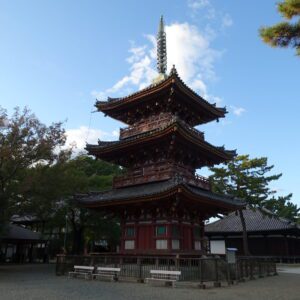
The main hall and Taishi-do are national treasures.

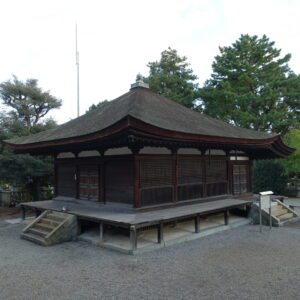
The bell tower, Jogyo-do, and Goma-do are national important cultural properties.
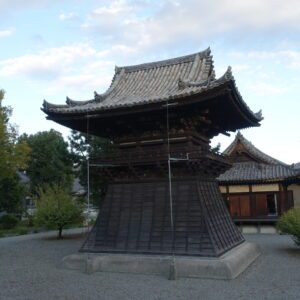
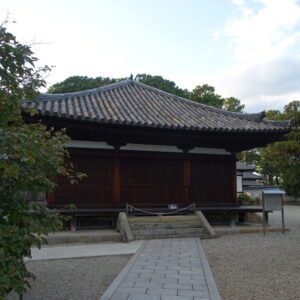

As with Ichijoji Temple, I enjoyed many wonderful buildings at Kakurinji Temple. Next time, I would like to take more time to visit the treasure house where many cultural properties are stored.
Admission fee: Yen500 for adults, Yen200 for elementary and junior high school students
Note: The departure / arrival times, fees, admission fees, etc. of transportation listed in the text are as of the time of writing the BLOG. They may change in the future, so please check for yourself when you go on a trip.
